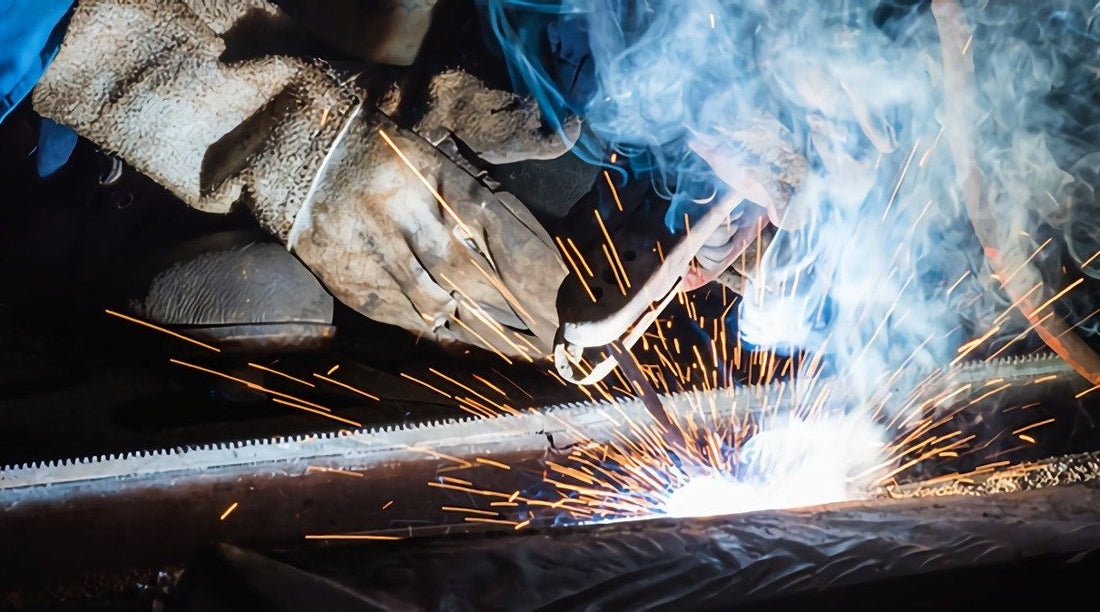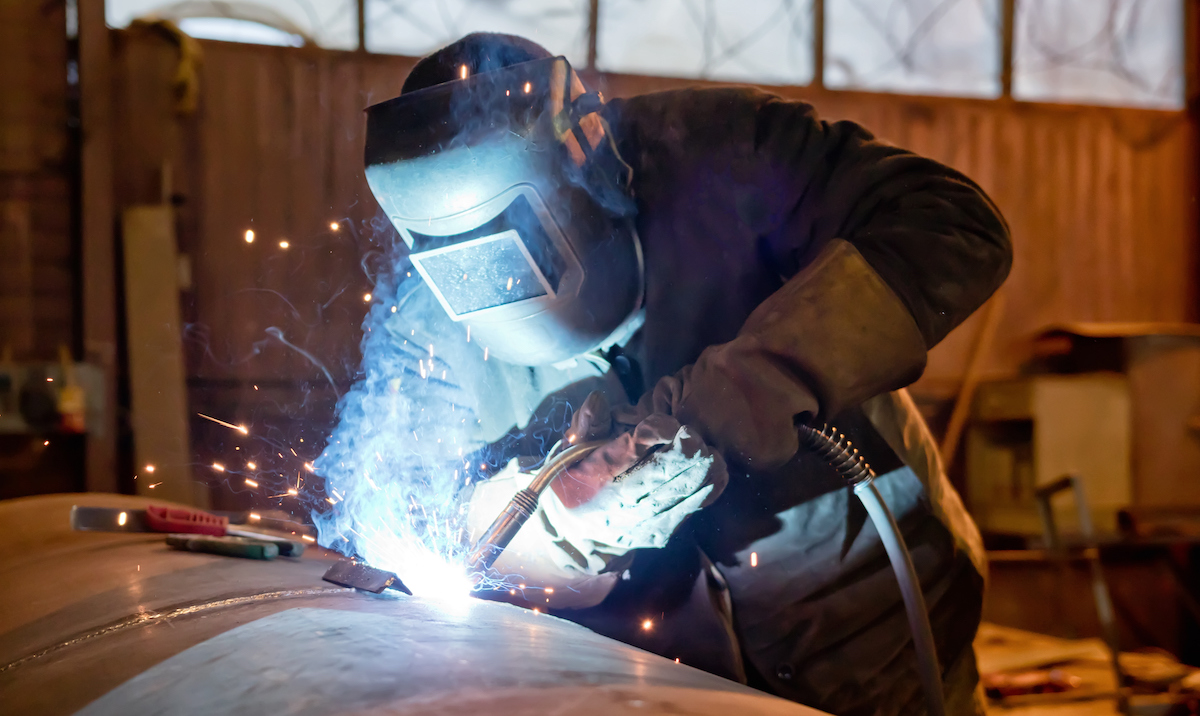Usual Welding Fixing Issues and Exactly How to Address Them Efficiently
Welding fixings typically come across a series of problems that can jeopardize the honesty of the end product. Common problems consist of poor infiltration, porosity, and misalignment, among others. Each defect offers distinct obstacles that call for specific strategies for resolution. Comprehending these concerns is essential for welders aiming to boost their outcomes and skills. This conversation will check out these common welding repair work issues and efficient approaches to resolve them.
Poor Penetration
Poor infiltration happens when the weld steel fails to totally fuse with the base product, causing weak joints and potential architectural failures. This concern typically originates from inadequate warm input, incorrect electrode angle, or inappropriate welding rate. Welders might encounter inadequate infiltration because of a miscalculation of the essential criteria for a particular product thickness or kind. Additionally, contamination on the base material's surface can impede reliable bonding, exacerbating the problem. To resolve insufficient infiltration, welders need to guarantee proper setups on their devices and preserve a clean job surface area. Normal assessment of welds is suggested to identify any type of deficiencies early, enabling timely adjustments and the avoidance of endangered architectural honesty in bonded assemblies.
Porosity
Porosity is an usual defect in bonded joints that materializes as little gas bubbles entraped within the weld metal. This problem can jeopardize the stability of the weld, leading to lowered toughness and prospective failing under stress. Welding. Porosity typically emerges from contamination, dampness, or improper welding techniques, which permit gases to escape right into the molten weld swimming pool. To deal with porosity, welders should ensure appropriate surface preparation, maintain a clean working atmosphere, and use appropriate welding parameters. Additionally, picking the appropriate filler product and shielding gas can minimize gas entrapment. Regular assessment and testing of welds can assist recognize porosity early, assuring timely rehabilitative activities are taken, thus maintaining the quality and integrity of the welded framework
Imbalance
Misalignment in welding can develop from numerous variables, including improper arrangement and thermal expansion. Recognizing the source is crucial for reliable resolution. A number of adjustment methods are available to realign components and assure structural integrity.
Root causes of Misalignment
Welding imbalance usually comes from a range of underlying problems that can jeopardize structural honesty. One main reason is improper fit-up of elements before welding, which can cause voids and unequal surfaces. Variations in thermal growth during the welding procedure can likewise lead to distortion, specifically if the materials being joined have different coefficients of expansion. In addition, inadequate fixturing and securing may stop working to hold elements firmly in position, resulting in activity during welding. Inadequately kept devices, including welding makers and tools, may present incongruities in the weld bead, further adding to imbalance. Lastly, operator mistake, coming from not enough training or experience, can also play a significant role in developing misaligned welds.
Improvement Techniques Readily Available
Resolving misalignment efficiently calls for a combination of restorative techniques tailored to the particular problems available. One usual technique is using jigs or fixtures to hold elements in the right setting during welding, making sure regular positioning. Additionally, preheating the products can aid minimize distortion and boost fit-up. For significant imbalance, mechanical realignment methods, such as using hydraulic jacks or clamps, can be used to deal with the placement prior to welding. Post-weld warm therapy might likewise be needed to alleviate stresses triggered by misalignment. Lastly, careful inspection and adjustment during the arrangement phase can stop misalignment issues from coming to be substantial problems, promoting a smoother welding process and improving overall structural stability.
Distortion
Distortion is a common difficulty in welding that can develop from different variables, consisting of uneven home heating and air conditioning. Comprehending the root causes of distortion is essential for applying effective avoidance methods. Addressing this concern not only boosts structural integrity yet also boosts the total quality of the weld.
Reasons for Distortion
When subjected to the intense heat of welding, materials typically undertake modifications that can cause distortion. This sensation largely emerges from thermal development and tightening throughout the welding process. As the weld area warms up, the material expands; upon air conditioning, it gets, which can produce inner anxieties. On top of that, uneven home heating throughout a workpiece can worsen these stress and anxieties, resulting in bending or bending. The kind of material also plays a significant function; metals with varying thermal conductivity and coefficients of expansion may respond in a different way, resulting in uncertain distortions. Additionally, inadequate joint design and poor fixturing can contribute to misalignment throughout welding, boosting the probability of distortion. Comprehending these reasons is essential for efficient welding repair and avoidance approaches.
Prevention Techniques
Efficient avoidance techniques for distortion during welding emphasis on regulating heat input and making sure appropriate joint design. Preserving a constant warmth input helps to decrease thermal expansion and tightening, which can lead hot plate welding to distortion. Utilizing strategies such as preheating the work surface can also lower the temperature slope, promoting uniform heating. Additionally, picking proper joint designs, such as T-joints or lap joints, can boost stability and lower anxiety focus. Executing proper fixturing to safeguard the work surfaces in position further help in maintaining positioning throughout the welding procedure. Finally, staggered welding sequences can distribute warm more uniformly, stopping localized distortion. By applying these methods, welders can greatly decrease the likelihood of distortion and enhance the total quality of their welds.
Splitting
Breaking is an usual problem come across in welding repair work, typically arising from numerous variables such as improper cooling rates, product selection, or poor joint preparation. The occurrence of fractures can considerably jeopardize the stability of the weld, causing prospective failures during procedure. To address this concern, welders should first examine the root creates, making certain that products are compatible and appropriately picked for the details application. Furthermore, managing the cooling price during the welding process is important; quick air conditioning can cause anxiety and lead to splitting. Proper joint design and preparation additionally add to reducing the threat. Executing these strategies can enhance weld high quality and sturdiness, eventually decreasing the probability of cracking in completed weldments.

Insufficient Combination
A significant problem in welding repair services is incomplete blend, which happens when the weld metal does not sufficiently bond with the base material or previous weld passes - Montana Mobile Welding and Repair Fabrication. This problem can result in weak points in the joint, possibly jeopardizing the stability of the welded framework. Elements contributing to incomplete combination include insufficient heat input, inappropriate welding method, and contamination of the surfaces being joined. To address this concern efficiently, welders ought to guarantee appropriate pre-weld cleaning and surface area prep work, along with adjust their welding criteria to achieve ample penetration and fusion. Regular assessment during the welding procedure can likewise help identify incomplete fusion early, permitting timely restorative measures to enhance the total high quality of the weld
Overheating
While welding fixings can enhance architectural stability, overheating provides a considerable obstacle that can result in material deterioration. Excessive heat throughout welding can modify the mechanical residential or commercial properties of steels, causing lowered stamina, increased brittleness, and warping. This sensation is specifically essential in high-stress applications where structural integrity is extremely important. Identifying getting too hot can include visual examinations for discoloration or distortion, as well as checking temperature level during the welding procedure. To mitigate the risks connected with getting too hot, welders should employ proper methods, such as managing warm input, readjusting travel speed, and using ideal filler products. In addition, carrying out pre- and post-weld warm treatments can aid bring back material residential or commercial properties and enhance the overall quality of the repair service, making certain long-term performance and safety.
Often Asked Questions
What Are the Usual Indicators of a Welding Problem?

How Can I Evaluate My Welds for High quality?
To evaluate welds for quality, one can make use of aesthetic assessments, ultrasonic testing, and radiographic methods. Each method ensures architectural stability, determines defects, and confirms adherence to specified requirements, inevitably boosting the dependability of the welded joints.
What Security Safety Measures Should I Take While Welding?
When welding, one need to focus on security by putting on suitable personal safety equipment, guaranteeing correct air flow, protecting flammable products away, maintaining a clean workspace, and recognizing surroundings to stop century mig welder injuries and mishaps.
Can I Fix a Weld Without Remodeling the Entire Joint?
Fixing a weld without remodeling the whole joint is feasible, relying on the damages (Belgrade Fabrication). Strategies such as grinding, adding filler material, or utilizing a welding procedure can efficiently resolve details imperfections while protecting the bordering structure
What Devices Are Vital for Effective Welding Services?
Important tools for reliable welding repair work include a welding maker, cord brush, mill, safety gear, clamps, and filler materials. Each tool plays a crucial role in guaranteeing top quality and security during the repair process. Porosity generally develops from contamination, dampness, or improper welding techniques, which permit gases to leave hot plate welding into the liquified weld pool. Poorly conserved equipment, including welding machines and devices, may present inconsistencies in the weld grain, more contributing to misalignment. When subjected to the intense warm of welding, products often go through adjustments that can lead to distortion. Breaking is a common problem run into in welding fixings, frequently resulting from different aspects such as improper air conditioning rates, material option, or inadequate joint preparation. A substantial problem in welding repair services is insufficient blend, which occurs when the weld metal does not effectively bond with the base material or previous weld passes.